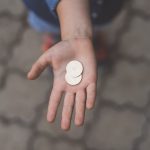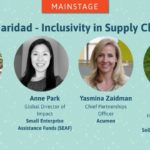 UN Foundation helps Sierra Gorda’s people create a unique blend of environmental and social impact.
UN Foundation helps Sierra Gorda’s people create a unique blend of environmental and social impact.
“We got involved with Sierra Gorda in 2004,” said Ryan Hobert, Deputy Director of the UN Foundation’s Climate and Energy Program. “We wanted to offset all of our current and historical green house gas emissions, our heating, our cooling, and our air travel.
“We had come across Sierra Gorda through the UNDP’s Global Environmental Facility,” the group that provides multilateral funding of the environmental efforts of the World Bank and others. “They got started with an $6.7 million grant and we met Pati and we decided we wanted to build their capacity and purchase their first bulk sale of offsets.”
Hobert’s team got the Baker & McKinsey law firm to do pro bono work to help both sides work through the initial contract, an eight-month project that created a sturdy template. They bought their first five tons at $10 a ton.
“At that point there was some reticence about forestry because of questions about permanence,” the question of whether the seller will really be around in 30 years to complete the reforestation that they promise to undertake once the sale is made.
The fact that Sierra Gorda’s land owners have been planting trees on their own and public land for hundreds of years and that the group had local to regional to national endorsements by the Mexican government mitigated that risk.
The odd thing about Sierra Gorda’s contracts, why it can be lower risk and relied on, is that performance is not based on the sometimes fickle or changeable Western benevolent donors or impact investors. Instead the potential scalable replication of the social enterprise is based on deep community-based collaborations led by local Mexican people themselves.
That’s what indigenous capital means: the people who are usually the beneficial recipients of Western goodwill are actually in charge and selling the mix of social and environmental value they create back to the West as a reliable security.
Deals like this usually start with some level of subsidy, such as that provided by the UN Foundation, but then progress to being marketable.
As the relationship has grown in the last half-dozen years, Hobert has been pleased with Sierra Gorda’s performance and, like all good partnerships, is taking action to go deeper with it. “They had MDG benefits to their work, social impact, poverty alleviation impact, and while those two efforts, climate and MDG are often separate, .”
Because Sierra Gorda brings together such a unique mix of value that is usually computed separately, the UN foundation has been helping get their methodologies certified by Rainforest Alliance and plans to celebrate their completion.
“They are doing this in a holistic way,” said Hobert, who could not think of another group providing Sierra Gorda’s unique mix of social and environmental value. “We like them, and what they do, and the way they do it.” Hobert said. “There are a lot of challenges to measuring and coordinating so many land owners but given those challenges, they seem to be engaging the people in a way that respects them and is trying to lift them up, and doing a good job of restoring their ecosystems. Unlike some projects with high potential where they hope to be in and out in a few years, they are working on reforestation over half a century, and they have an organization that is close to the people, that people trust.”



